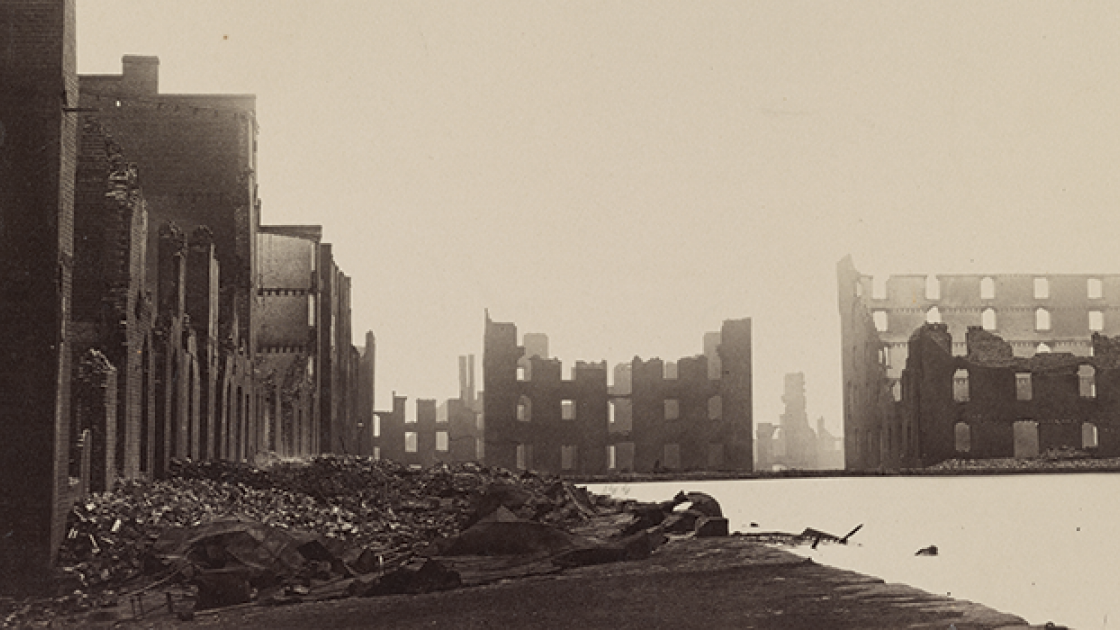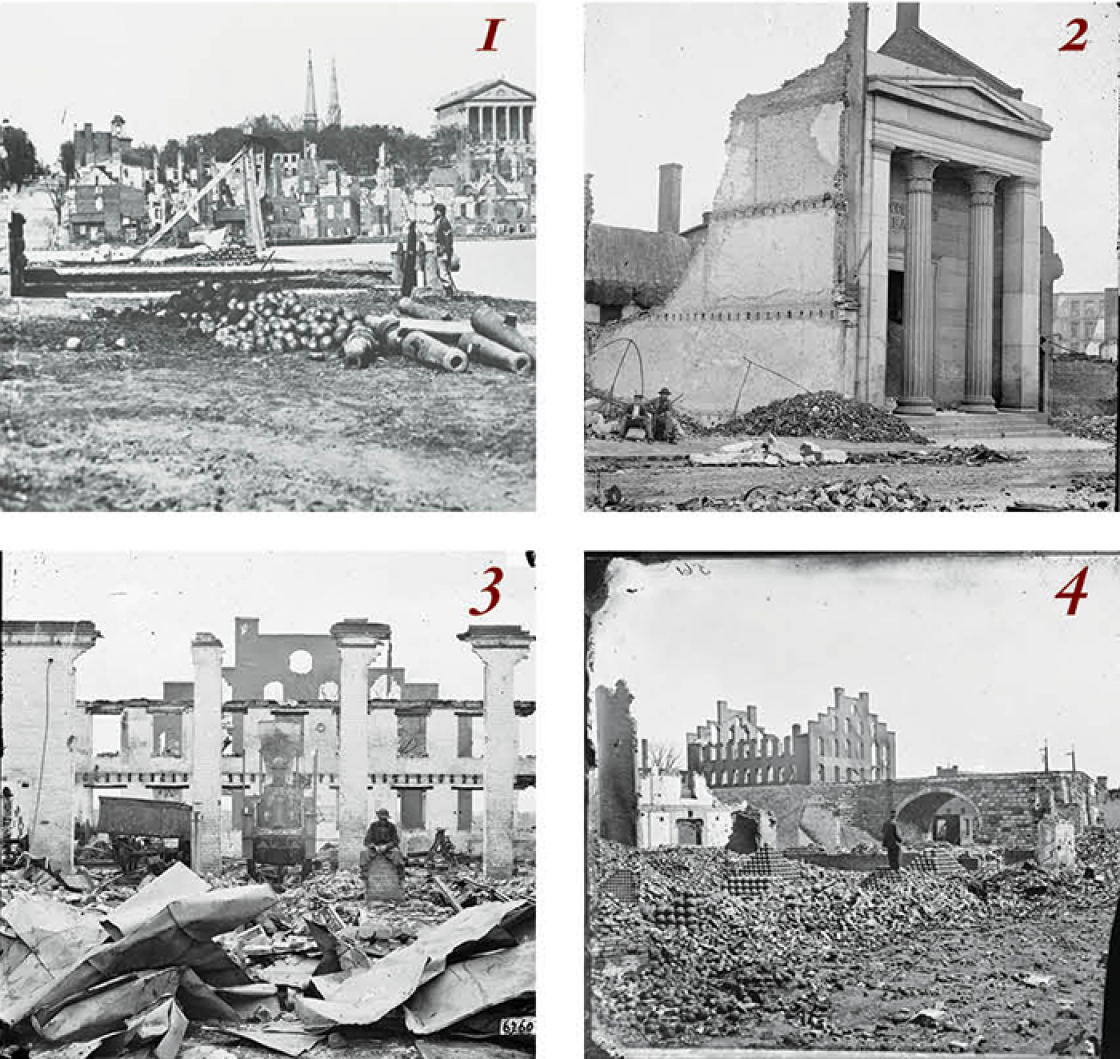About Publications Library Archives
heritagepost.org

Preserving Revolutionary & Civil War History

Preserving Revolutionary & Civil War History

During the course of the Civil War, the Confederate capital at Richmond faced many threats from Federal troops, her inhabitants gradually growing accustomed to the sound of artillery fire just outside the city. But by the early spring of 1865, the nature of this hazard had intensified significantly. After nearly 10 months of stagnation outside Petersburg, a fresh offensive by Lt. Gen. Ulysses S. Grant’s Union armies was poised to change the course of the war.

Beloved Confederate Gen. Robert E. Lee had held back repeated assaults, even as the strength and morale of his depleted forces waned and his supplies ran dangerously low. Faced with this harsh situation, he began contemplating a previously unthinkable reality: the fall of Richmond.
Lee had always felt constrained by the duty to defend the Confederate capital. Abandoning it meant he could move more freely, prolonging the war militarily in Virginia for some time. Beginning in early March, he and Confederate president Jefferson Davis had discussed the probability of needing to quit Richmond, prompting the departure of Davis’s wife and family at the month’s close.
On April 1, a force of more than 6,000 Union cavalry troopers, supported by infantry and artillery, overran the Confederate defenses at Five Forks, and Lee knew that the time had come. He telegraphed Davis in the aftermath: “I advise that all preparation be made for leaving Richmond tonight.”
After reading the telegram during his Sunday morning church service on April 2, Davis issued the first orders for the Confederate government’s evacuation. No formal announcement was made to the citizens of Richmond, even as government officials began burning any potentially sensitive documents in the streets.
Official word of the Confederate government’s departure was finally announced at 4:00 p.m., and a mass exodus of officials and prominent citizens began almost immediately. But Davis delayed his own departure, hoping that somehow Lee would send news of a reversal of fortunes and that the government would not have to abandon the city. Finally, at 11:00 p.m. — nearly three hours late — he boarded a train and began the sad trip to Danville.
Despite the efforts made by the remaining Confederate soldiers and the city’s officials, chaos ruled Richmond. Knowing how badly the city of Columbia, S.C., had fared when occupying Union soldiers discovered its stores of whisky, Richmond’s officials ordered all liquor be destroyed. Those men charged with going through the stocks of every saloon and warehouse found the most expedient way was to smash the bottles and pour the kegs into the gutters, attracting crowds. They gulped the whisky from the curbstones, picked it up in their hats and boots and guzzled it before stooping for more.
Military governor Lt. Gen. Richard Ewell was also under orders to destroy the city’s tobacco, cotton and foodstuffs before the Yankees got to them. To destroy the tobacco, Ewell had it moved to buildings that he believed could burn without setting the rest of the city on fire and asked the fire department to stand by to keep the fire from spreading.
In a city that had been suffering from scarcity, where high officials held “Starvation Balls,” no one believed there could be much food left to destroy. But they were wrong; speculators had been at work. The crowd, seeing the commissaries filled with smoked meats, flour, sugar and coffee, became ugly and soon turned to looting. The few convalescent soldiers remaining in the city were unable to control the situation — only the fires first set to dispose of sensitive government documents, but since grown out of control, could drive away the crowds.

Drifting embers were caught by the wind. First a single building, then the entire business district, caught fire. Worse, as Confederate Adm. Raphael Semmes wrote, “The Tredegar Iron Works were on fire, and continual explosions of loaded shell stored there were taking place….The population was in a great state of alarm.” Thick black smoke rose from the ironclads set alight to keep them out of Union hands. When their arsenals exploded, doors were torn from their hinges and windows two miles away were blown out.
The Union cavalry that entered the city faced little resistance and, early on the morning of April 3, the Union flag was raised over the capitol building. The first order of business was fire suppression: the city’s two engines were deployed, bucket brigades were formed and threatened buildings were pulled down to create firebreaks. Five hours later, the wind finally calmed and the blaze could be controlled, but not before all or part of more than 800 buildings were destroyed.
President Abraham Lincoln, who had been following developments from the Union command base at City Point, only 20 miles down the James River, arrived in Richmond on April 4. A crowd gathered as he strode through the streets — a mixture of stoic Confederate citizens and exuberant former slaves. The president’s sightseeing tour of the Confederate capital’s shell was led by Maj. Gen. Godfrey Weitzel, now in command of the city. When asked for guidance on how to treat the citizens, Lincoln responded to Weitzel, “If I were in your place, I’d let ’em up easy, let ‘em up easy.”